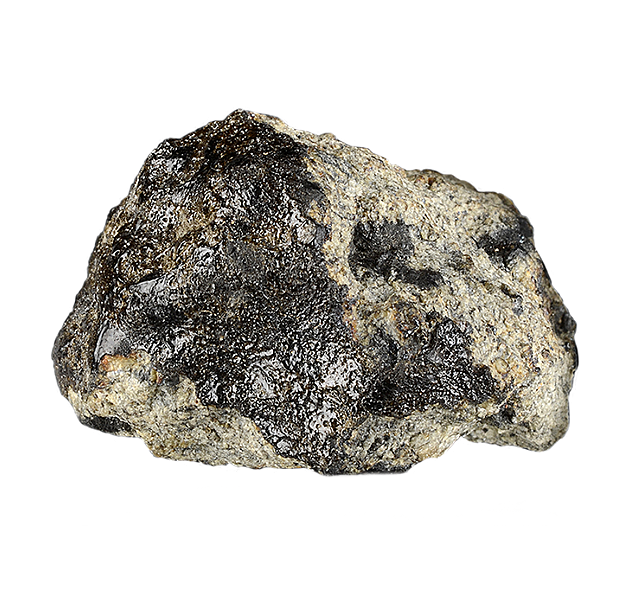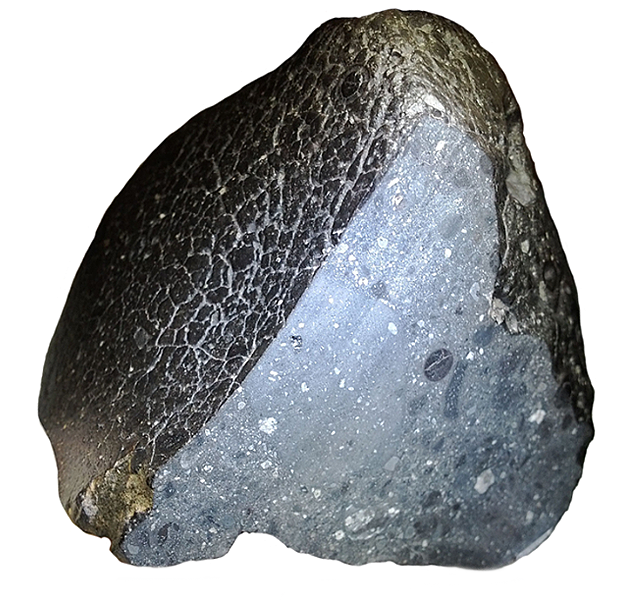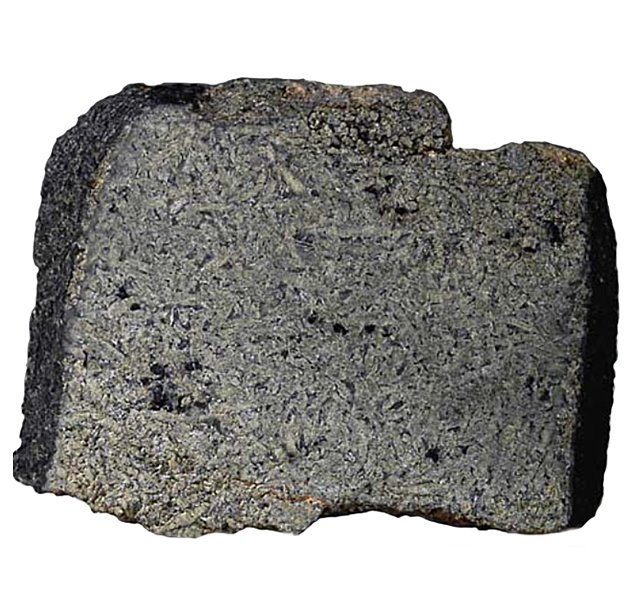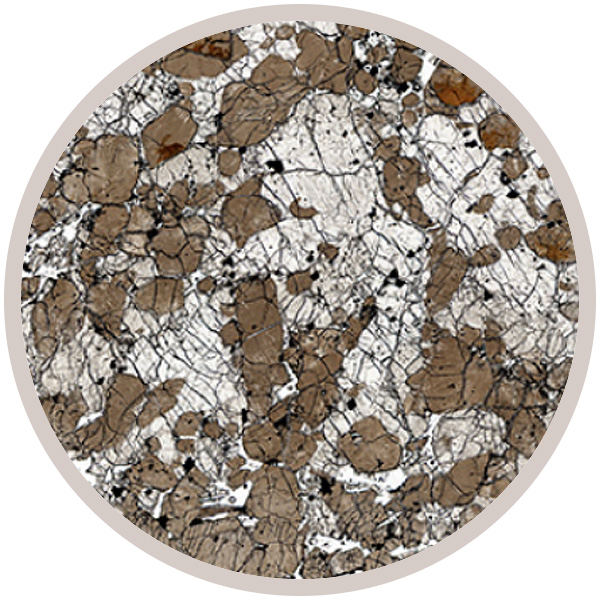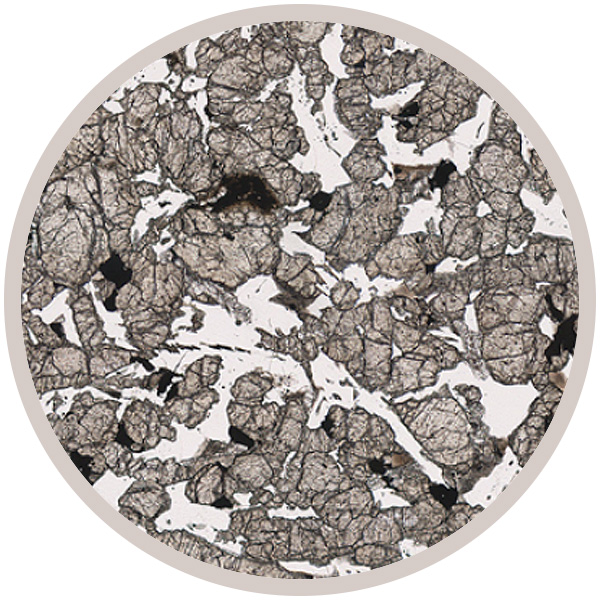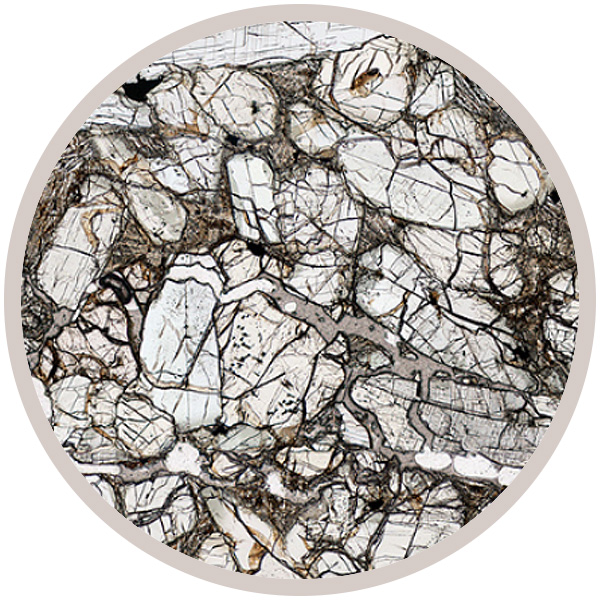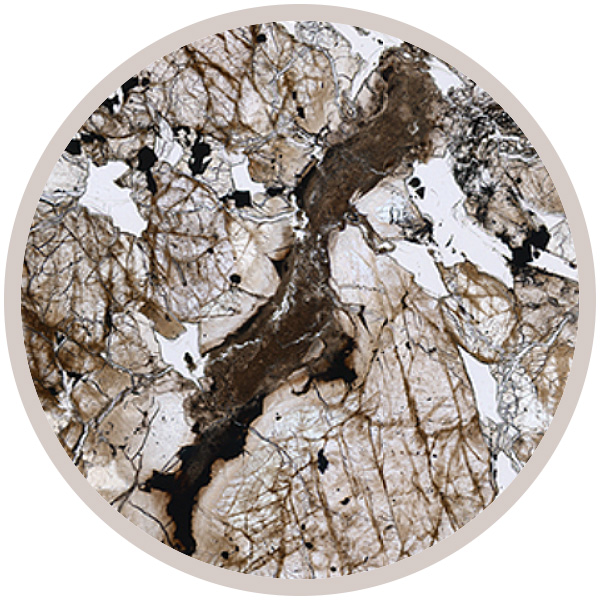
Fact sheet
This cumulate gabbroic rock (lherzolite) was found in 1988 in the Lewis Cliffs region of Antarctica. Isotopic techniques have dated it at 166±16 m.y. (Sm-Nd) and 183±10 m.y. (Rb-Sr). It has many similarities with another lherzolitic shergottite - ALHA 77005 and both may have been ejected from Mars at the same time.
80% of the outer surface of LEW 88516 is black fusion crust. The interior contains about 50% olivine, 35% pyroxene, 8% maskelynite (shock-melted plagioclase feldspar) and 5% glass. Grain size is 2-3 mm. Accessory amounts of ilmenite, chromite, whitlockite (Mg-rich apatite) and pyrrhotite are also present.
Glassy to partly crystalline veinlets run through the sample.
This description is based on the work of NASA scientist Charles Meyer - compiler of The Mars Meteorite Compendium
This collection of meteorites includes Shergottites, Nakhlites and Chassignites (or SNC meteorites) which originate from the surface of the planet Mars.
They carry unique signals of the surface of the planet that allows scientists to study the composition and age of Martian rocks. The collection includes a sample of the famous ALH84001 meteorite, evidence from which was used in 1996 to begin the debate of 'life on Mars?'.

